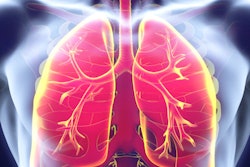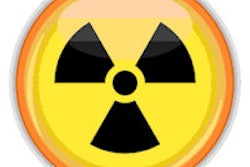
SAN FRANCISCO - Setting up a lung cancer screening program is no casual undertaking. Is it worth it? The answer depends on many things, including one's tolerance for the hours, costs, and administrative work -- versus the honor of doing some good in the world, concluded a talk on Wednesday at the International Society for Computed Tomography (ISCT) 2016 Symposium.
"I often ask myself if it's worth it," admitted Dr. Jared Christensen, an associate professor of radiology and chief of cardiothoracic imaging at Duke University, who set up a screening program five years ago.
"There are costs associated with a screening program; there's a lot of time and effort," he said. "One way of looking at it is to look at the outcomes."
Cost-effective in the U.S.
What is known is that lung cancer screening itself is cost-effective, in that it provides an important service for patients, Christensen said. A 2012 study by Pyenson et al (Health Affairs) found lung cancer screening to be one of the most cost-effective screening tests available at about $11,000 per life-year saved, compared with $18,000 for colon cancer screening, $31,000 for breast cancer screening, and $50,000 for cervical cancer screening.
 Dr. Jared Christensen from Duke University.
Dr. Jared Christensen from Duke University.But that doesn't necessarily mean it's worthwhile, according to Christensen. Program costs are substantial, including more than $100,000 a year if an additional full-time-equivalent (FTE) radiologist position needs to be filled. A typical institution will also spend $60,000 to $100,000 per year to hire a program coordinator, $50,000 to $80,000 a year for a patient navigator, an additional $12,000 to $100,000 on software and infrastructure depending on the existing setup, and perhaps $10,000 to $20,000 a year on marketing.
"It's been estimated that you need to be giving about 6,000 studies a year before adding an additional FTE radiologist, and that's a lot of screening," Christensen said. The program coordinator is an essential position that helps bring together all of the aspects of the lung cancer screening program. Patient navigators are a common feature of lung cancer screening programs, but they can often be borrowed from other screening services, at least at the outset while volumes are low.
On the revenue side, there are professional fees associated with baseline and incidence screens. There are diagnostic exams and procedures that represent downstream revenue as a result of positive screens, and revenue from the workup of incidental findings. And of course there is income from lung cancer treatment in patients in whom the disease is detected, Christensen said.
Lahey Clinic in Burlington, MA, was providing lung cancer screening for free before the U.S. Centers for Medicare and Medicaid Services (CMS) approved reimbursement in February 2015. Following publication of the National Lung Screening Trial results in 2011, a 2013 article in the Journal of the American College of Radiology by McKee and colleagues showed that revenue from lung cancer treatment will cover about 60% to 80% of the cost of screening. The remaining program costs were covered by other downstream revenues associated with screening. With Medicare reimbursement, programs can be expected to at least break even or maybe even realize a small profit, he said.
More than money
"Of course, we're altruistic and that's not the primary reason we do this," Christensen said. "This speaks to the time and effort involved, because this is not just about revenue. There's a lot of time and infrastructure planning that needs to be in place for maintaining a screening program."
On the infrastructure side, there are CT protocols to implement, the need to interface with electronic medical records, technologist training, reporting templates, and institutional review board (IRB) consents. It's important to go out and interact with physician champions in primary care and pulmonary medicine who will spread the word. There are mailers and patient brochures to create, webinars to develop, and grand rounds to conduct to promote screening, he said. There is a shared decision-making component of screening that requires its own bureaucracy.
Finally come all of the review activities centers will need to perform, such as enrolling in the American College of Radiology lung cancer screening registry, performing database analysis, examining referral patterns, measuring patient satisfaction, and implementing changes to the screening program.
On the plus side, CMS came onto the scene last year and acknowledged the value of screening -- but it also included a lot of requirements that add to the burden of running a screening program, Christensen said.
"There are facility requirements that need to be in place to perform CT screening; you have to have a smoking cessation program, and you have to report all of your screening study data to a CMS-approved registry," he said. "I have to admit, the registry has been painful for our program, primarily because it's difficult to keep up."
Registry can be onerous
If your center doesn't have an automated method to enter data into the registry, it can be challenging to input a minimum of 23 variables for each screening patient, Christensen said. Additional clinical data must also be entered for patients who return for incident screening or follow-up. At the outset, inputting the data manually was taking an average of 90 minutes per patient.
There are radiologist requirements in place that are not beyond the abilities of most practicing radiologists. For patients, eligibility must be assured and the cost of the shared decision-making visit is substantial. Among the criteria, selected screening subjects must be willing to adhere to a multiyear screening program, and they must be healthy enough to undergo treatment in the event cancer is found. Even the screening order itself is more complicated than for any other screening program, Christensen said. On top of everything, there are medicolegal risks, client risks, and financial risks associated with a screening program.
"We have daily, weekly, and monthly meetings associated with our lung cancer screening program in order to stay on top, make sure we're compliant, and implement improvements along the way," he said.
Success at Duke
The Duke University program has screened 816 patients since October 2011 and found nine lung cancers (1.1%), as well as six extrapulmonary malignancies (0.7%), Christensen said. There have been 19 confirmed significant findings in all, and no major complications.
A recent survey of 148 institutions found that they defined success in several different ways. Some defined success by the number of cancers they detect, others by the numbers screened, and still others by revenue saved or generated, he said. But there are benefits to lung cancer screening.
"Certainly it can be rewarding and satisfying, and it makes a big difference in the lives of patients in whom you detect cancers," Christensen said. "But there are significant costs to implement a lung cancer screening program, and it's not really going to be a generous source of revenue. Success really requires institutional support, and the definition varies. ... For our program, we consider it to be a worthwhile endeavor. We find it both challenging and rewarding -- yes, there are headaches along the way, but to date we've been satisfied."




















